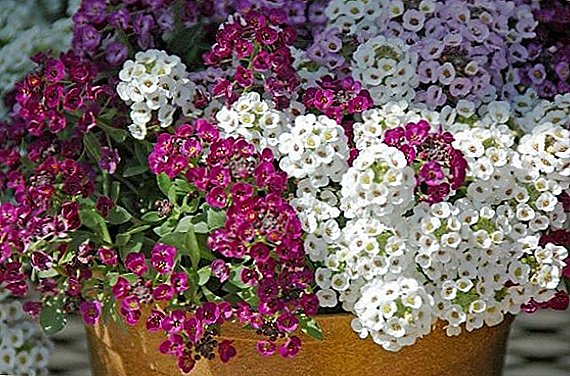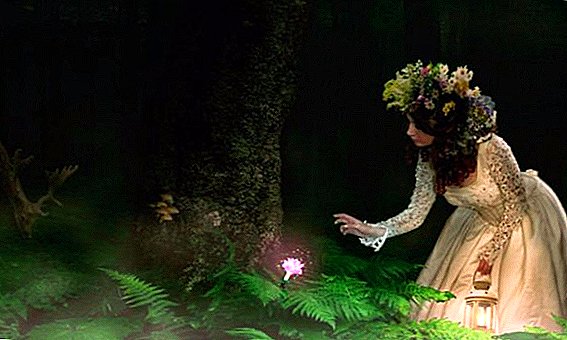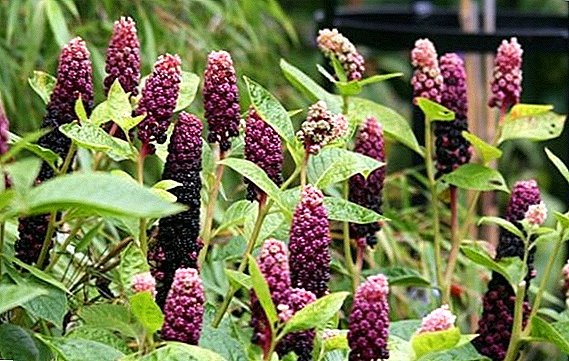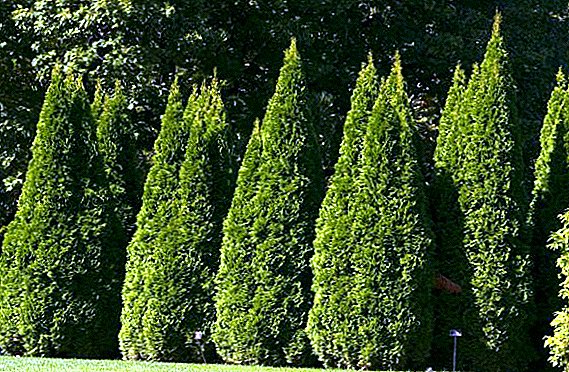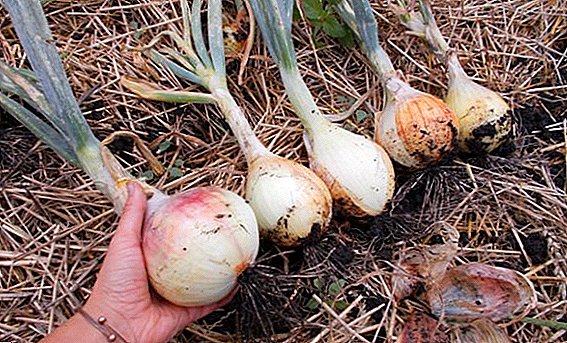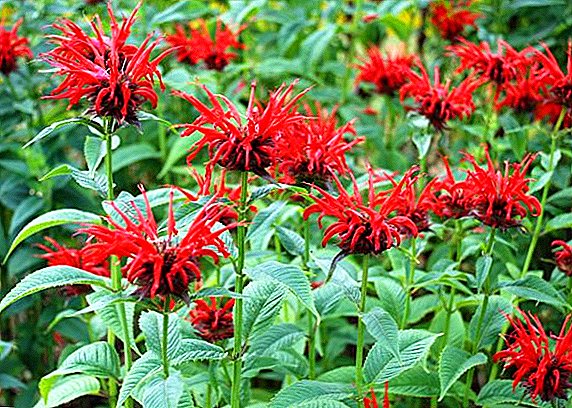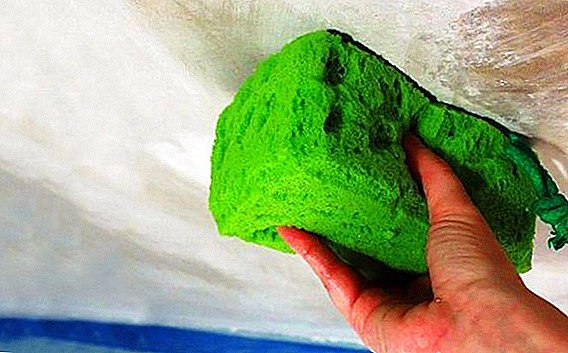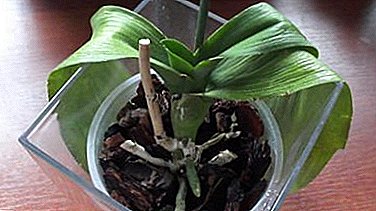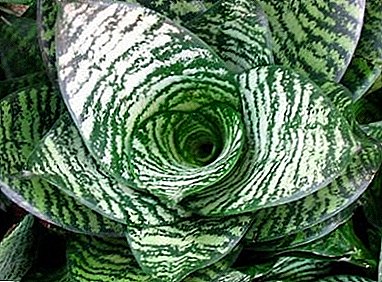
Most florist know the name "Teschin language", as the people call a wonderful plant from South Africa - Sansevieria three-lane (laurenti).
This indoor flower will surely find a place in the interior, it will suit both a classic setting and styles such as village, loft, modern, oriental and others.
General characteristics
 Sansevieria laurenti refers to succulents. It has long, erect and rigid leaves, extending from the creeping rhizome. Along the entire length of the bright leaves are transverse green stripes. Swept leaves can reach 1 meter.
Sansevieria laurenti refers to succulents. It has long, erect and rigid leaves, extending from the creeping rhizome. Along the entire length of the bright leaves are transverse green stripes. Swept leaves can reach 1 meter.
Landing
At the bottom of the pot in front the transplant fits the drainage, for these purposes suitable claydite. As a soil, a mixture of turf and leaf earth is used, with the obligatory addition of sand to give looseness.
It is recommended to transplant young plants annually, gradually increasing tank size. Adult specimens are enough to replant as the pot becomes cramped. It is important to take into account that the rhizome is shallow, therefore the landing tank is taken low but wide.
Watering
Since sanseviería is a succulent, watering should be done carefully, especially in winter and cloudy days. Well tolerated ordinary tap water, but it is desirable to defend to room temperature.
When watering no water is allowed in the center sockets, it can cause leaf rot.
Spraying is not required, as this plant tolerates both dry and moist air.
Top dressing
The growth of sansevieria is not very fast, therefore she doesn’t need frequent feeding. Suitable fertilizer for succulents or diluted in half for deciduous plants.
 Lighting
Lighting
It grows well in bright light and in partial shade. In the sun, the pattern on the leaves will be brighter, and growth will be faster.
May be under artificial light, in which case it is recommended additional lighting up to 16 hours per day.
Temperature
To temperature is not demanding. It grows well both at home and outdoors.
In winter, a temperature of about 14 degrees is desirable; it can withstand a short-term drop to 5 degrees. However, it does not need a period of rest and feels good in the indoor environment.
Bloom
With good care, the plant appears a panicle with green and white tubular flowers. Duration of flowering - about a week.
Pruning
To add decorative value, old and beginning to dry leaves are sometimes removed, but mostly pruned do not use.
 Breeding
Breeding
The most convenient and fastest way - split rhizome during transplantation.
Another method that will take longer - leaf plates. For this, a part of a leaf is separated from the plant and planted vertically in the ground.
Diseases and pests
Sansevieria may be amazed thrips and mealybug. Get rid of them will help chemicals, one of the most effective and safest is Actellic.
In addition to pests excessive watering is dangerous - In this case, the rhizome decay and the plant dies. The appearance of brown spots on the leaves is a consequence of excessive watering.
In the case when watering is very rare, the tips of the leaves start to dry out first, which spoils the decorative appearance of the plant.
Every grower should know that Sansevieria refers to poisonous plantsTherefore, it is necessary to prevent contact with him animals and children.
A photo
See photos of plants below:







